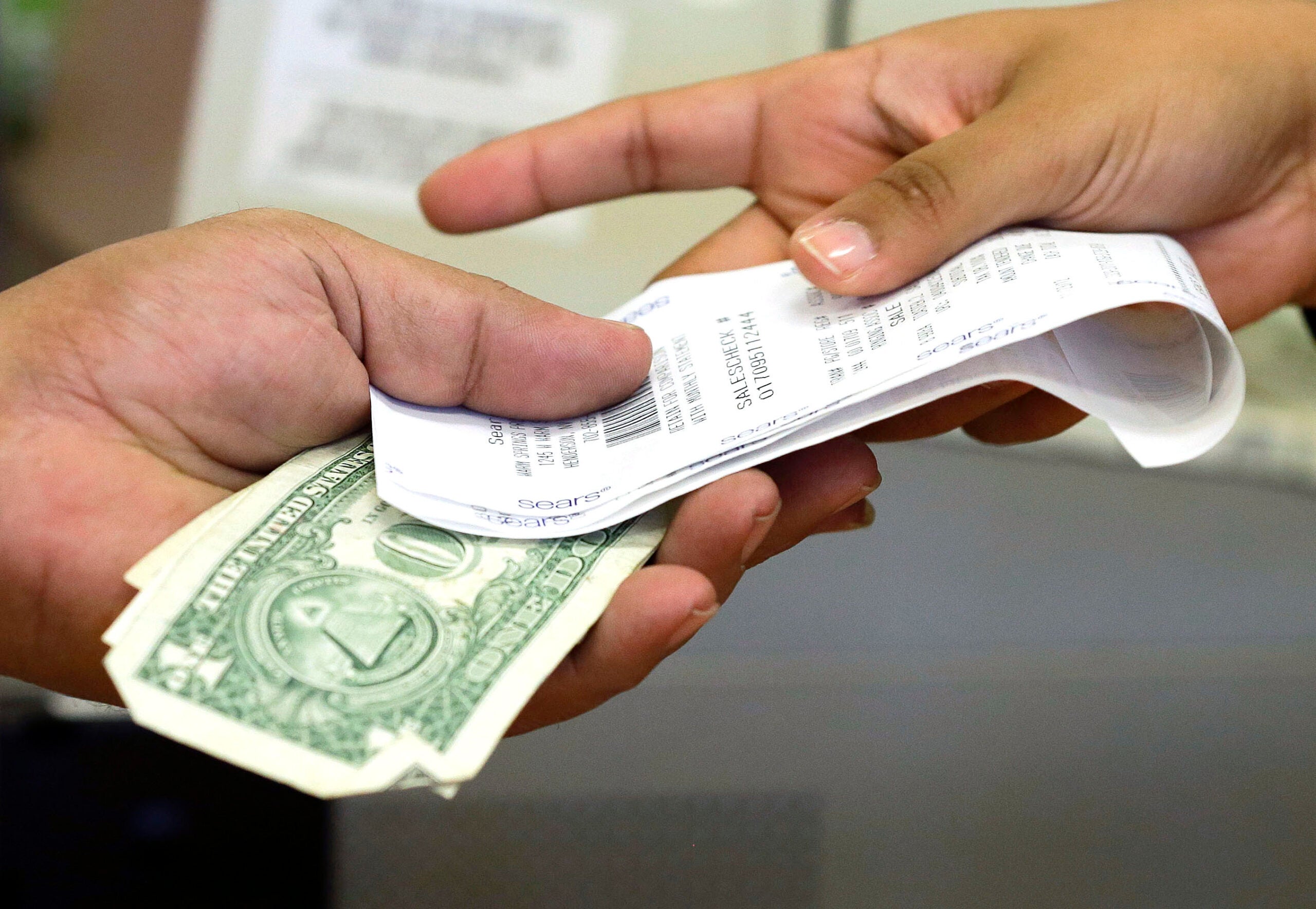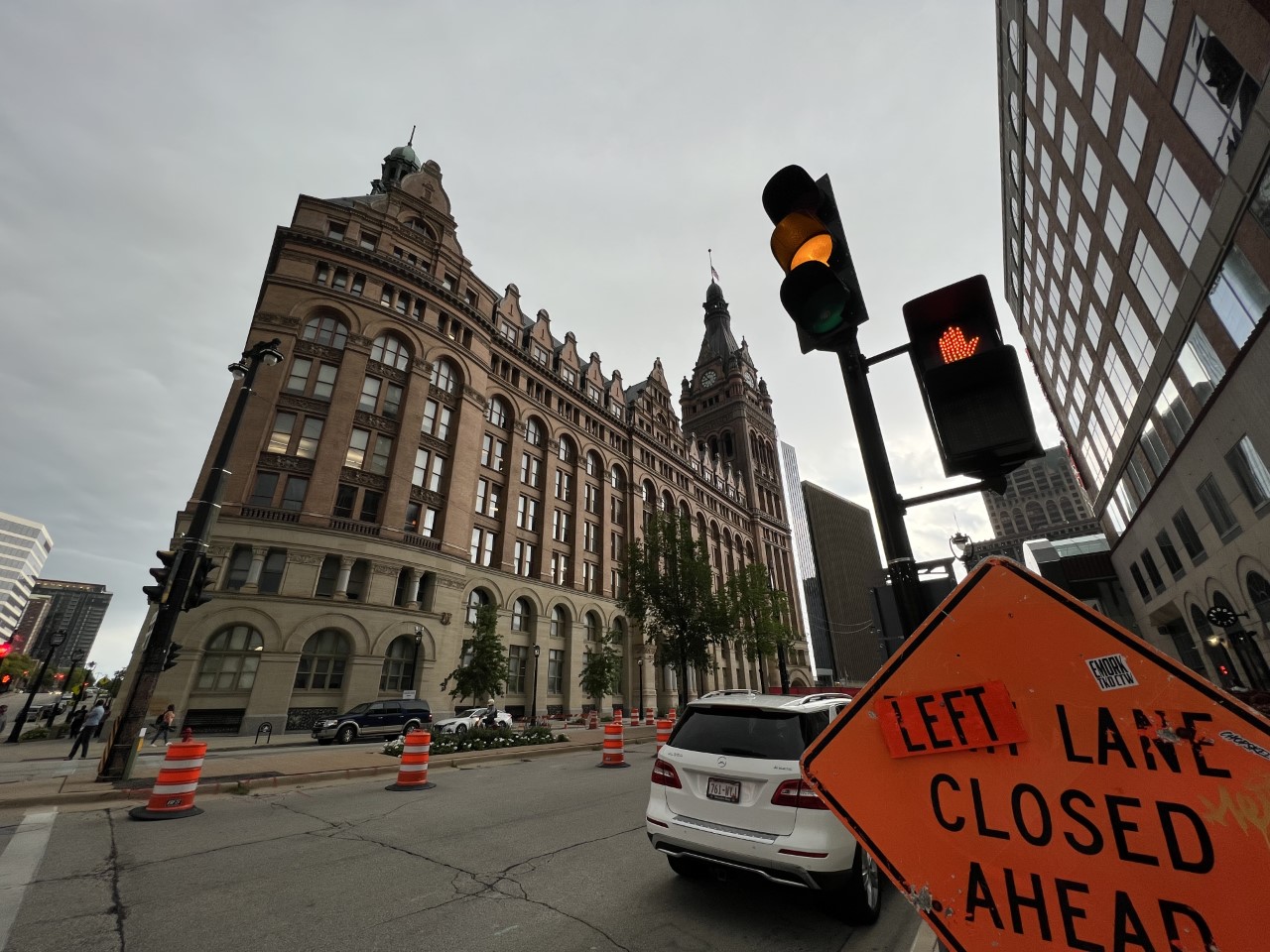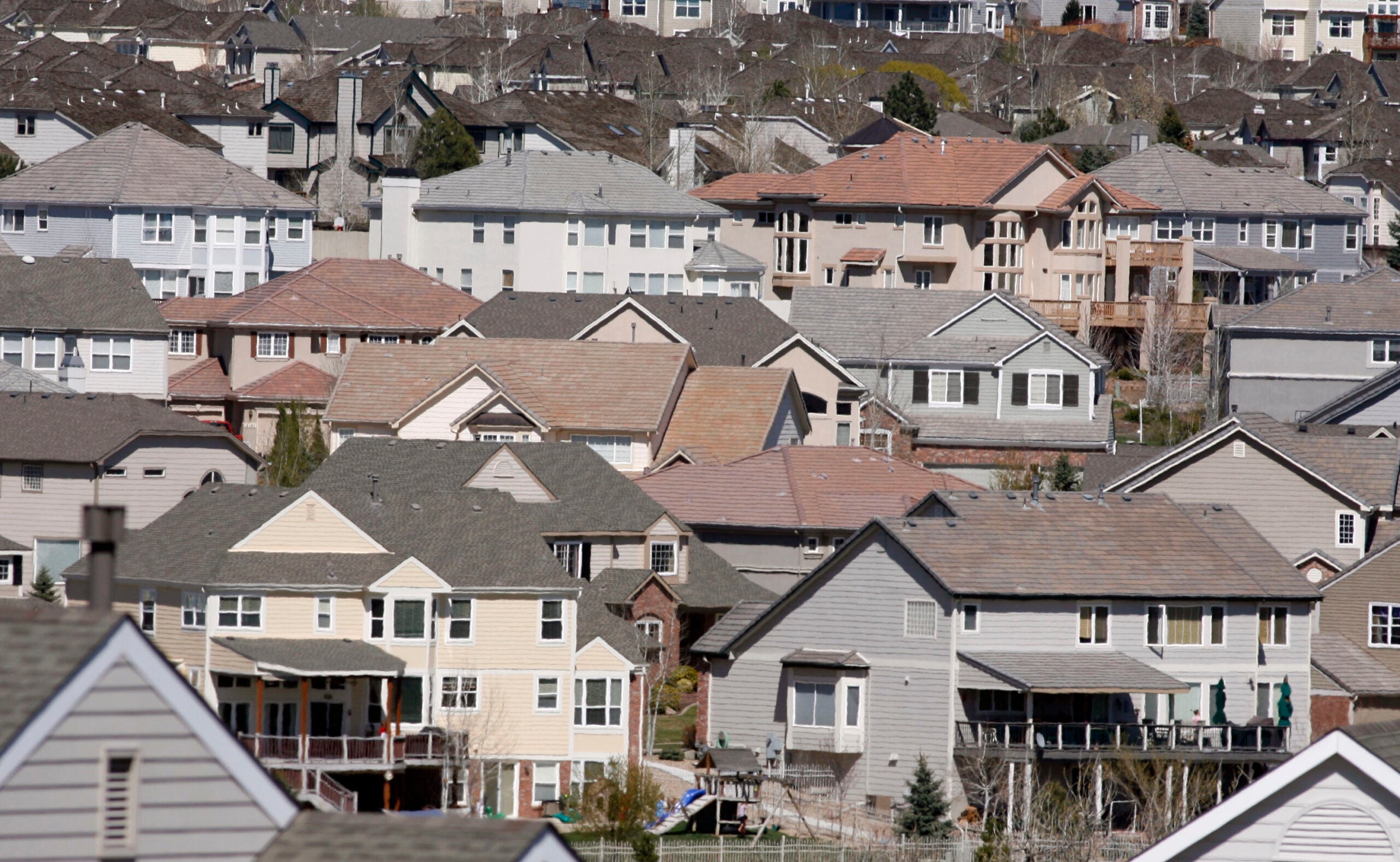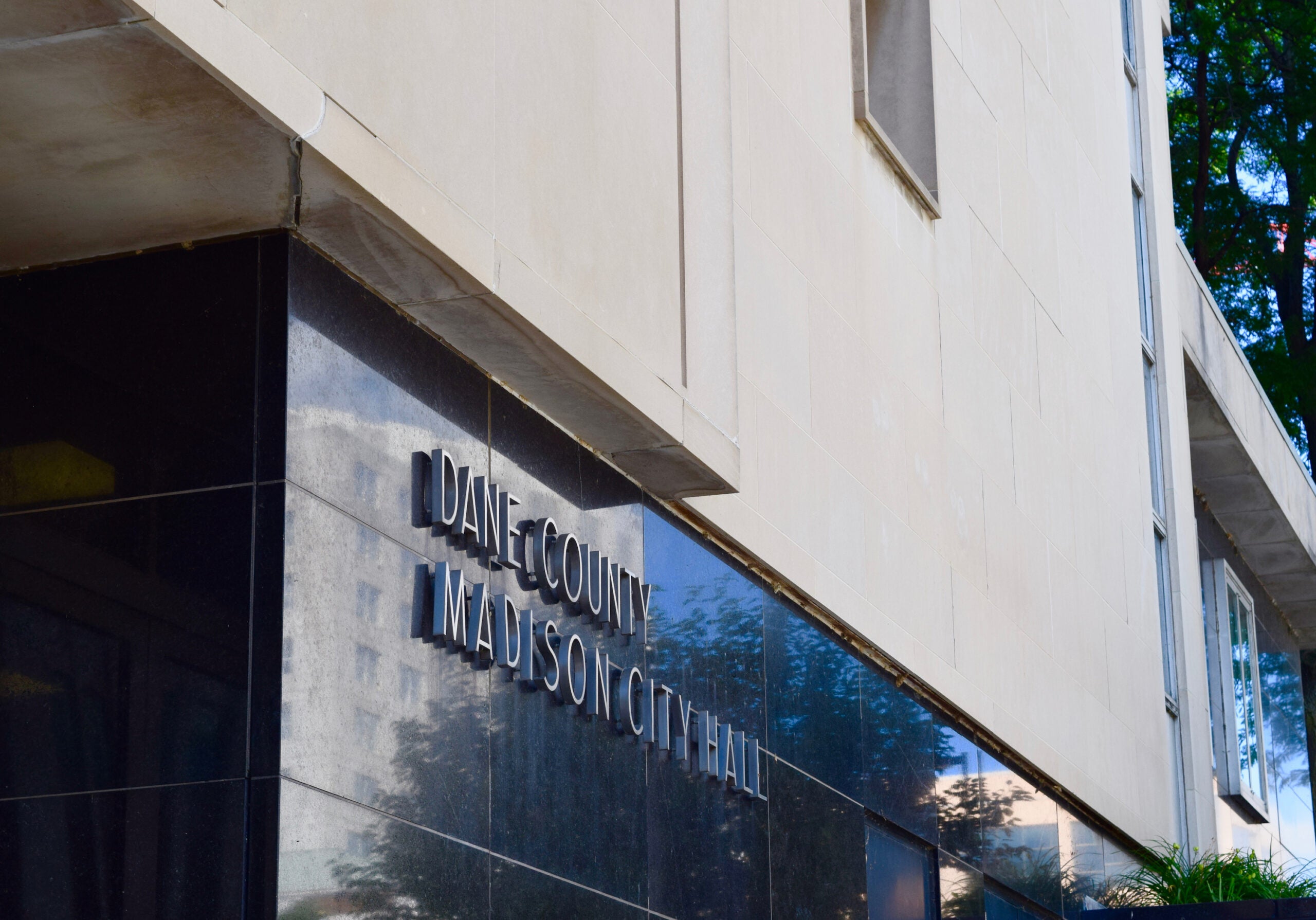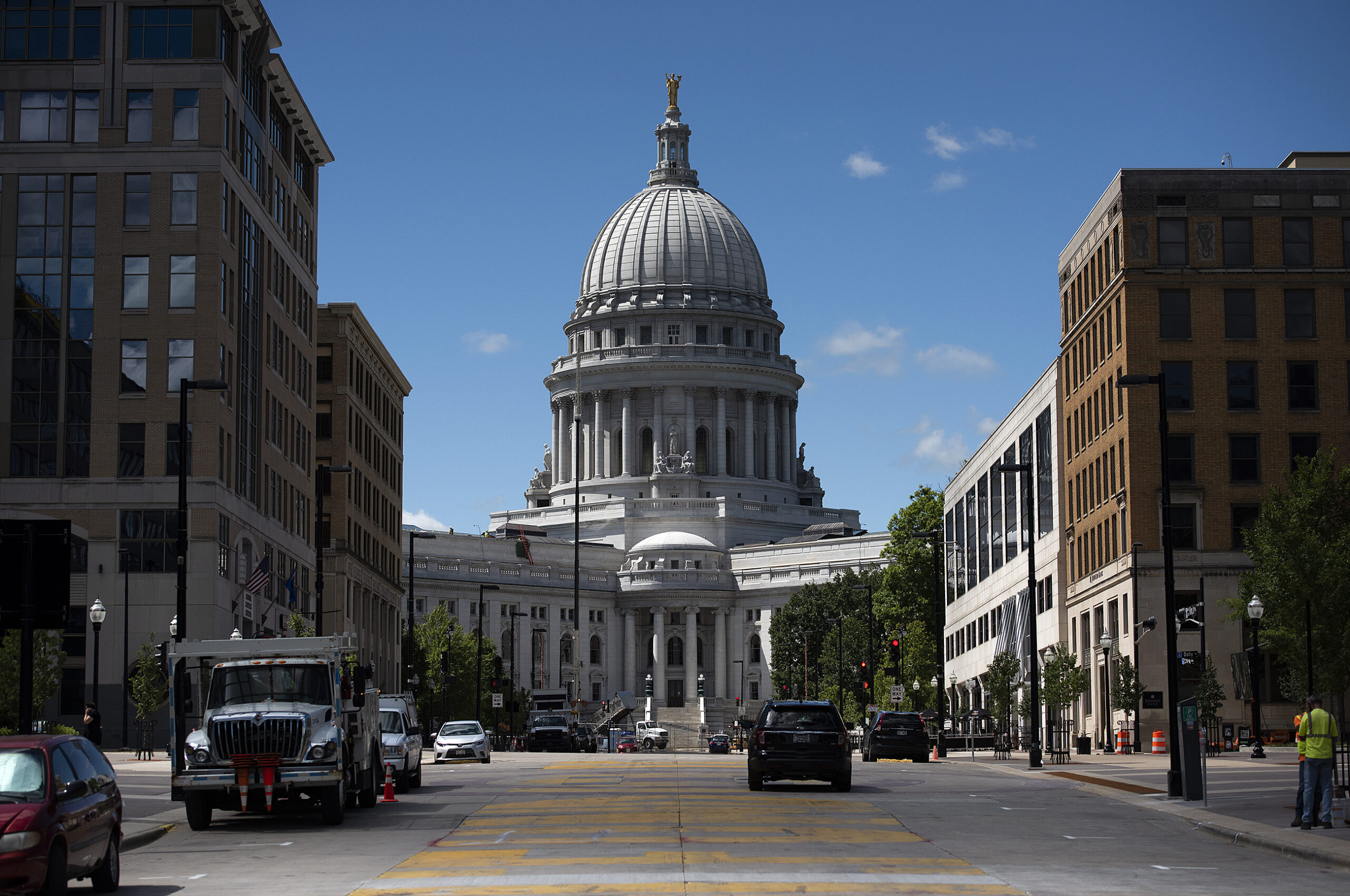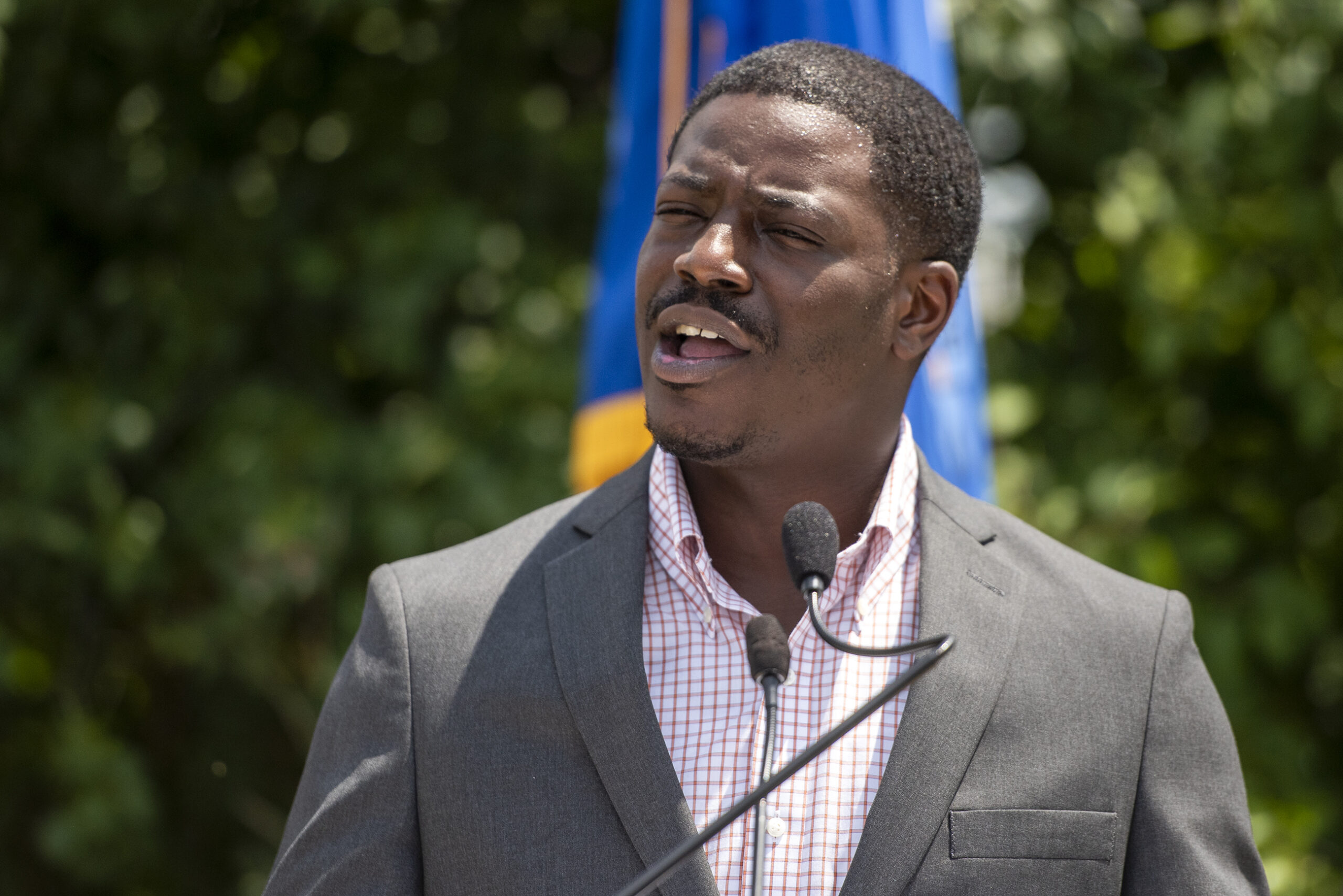Milwaukee County leaders are proposing a 1 percent local sales tax increase that could be reinvested into the community through property tax relief and refurbishing the county’s aging buildings.
State Rep. Evan Goyke, D-Milwaukee, and state Sen. La Tonya Johnson, D-Milwaukee, plan to introduce a local option sales tax to the Wisconsin Legislature this fall. If approved, a referendum would be brought to Milwaukee County voters in Spring 2020.
The proposed plan could bring in an extra $160 million in the first year, with more than 25 percent of that money projected to come from visitors and non-residents, according to the county.
Stay informed on the latest news
Sign up for WPR’s email newsletter.

A breakdown by municipality of how the proposed 1 percent local sales tax increase in Milwaukee County could affect municipal support. Corrinne Hess/WPR
The additional revenue could be used to reduce property taxes, investment in municipal facilities, community assets and services and address capital projects and deferred maintenance, according to the county.
Property taxes could be reduced 4 to 11 percent, depending on the municipality, said Steve Baas, vice president of governmental affiars with the Metropolitan Milwaukee Association of Commerce.
“For years we have been doing more with less as state aids continue to decline, and having the option to generate local revenue represents a watershed moment for us to not only sustain ourselves, but to thrive for generations to come,” Milwaukee County Executive Chris Abele said in a written statement. “This plan is the best way forward for us to give Milwaukee County taxpayers the services and programs they deserve.”
Municipalities can not increase a tax, or go to referendum to do so without approval from the state. Gaining approval from the Republican-controlled Legilsature could be an uphill battle.
Kit Beyer, communications director for Communications Director for Assembly Speaker Robin Vos, said he would “discuss the proposal with the Assembly Republican caucus but it will be a tough sell for many of his colleagues.”
While a press release prior to a Monday meeting in South Milwaukee with the leaders of all of Milwaukee County’s 19 municipalities, stated that the group voted unanimously on moving forward with the proposed legislation — Monday’s meeting showed otherwise.
During the meeting, the mayors decided to hold a special meeting in two weeks to discuss the legislation after arguments about how the revenue would be spent flared. Some of the mayors were particularly concerned about paying for county-run buildings that need to be repaired.
Most of those buildings including the courthouse, jail, Milwaukee Public Museum and domes are in the city of Milwaukee. Property tax relief will be allocated to municipalities’ based on population, Milwaukee has nearly 63 percent of the county’s population.
“This is a tax shift,” said Franklin Mayor Steve Olson during Monday’s meeting. “It’s my tax base going to someone else. If the county is going to keep it and put it toward the court house, don’t give us the idea that we’ll have some input.”
Under the plan, Milwaukee County taxpayers would have the option to vote to raise the sales tax to 6.5 percent, still among the lowest nationwide. The proposed 1 percent local option sales tax would not be added to groceries, pharmaceuticals and medical equipment.
According to the Wisconsin Policy Forum, Wisconsin ranks seventh in the nation and first in the Midwest for its reliance on property taxes for funding municipalities.
Milwaukee County officials launched the Fair Deal Workgroup in 2018 to explore new revenue options to address the structural deficit. In conjunction with state and local community and business leaders, the Fair Deal Workgroup proposed recommendations that included allowing local control to generate new revenue and reduce the current reliance on property taxes through a binding referendum process.
“This plan starts to address an outmoded state revenue structure which resulted in Milwaukee having the highest municipal rate of property tax as percentage of local tax revenue amongst all our peer cities in the country,” Julia Taylor, president of the Greater Milwaukee Committee said in a written statement.
Tim Sheehy, president of the Metropolitan Milwaukee Association of Commerce, said the proposal could provide property tax relief while maintaining critical services and supporting infrastructure in Milwaukee County.
“This new partnership is a critical step in moving the Milwaukee area forward,” Sheehy said. “Milwaukee County and its municipalities house 60 percent of the jobs in our metro area.”
Wisconsin Public Radio, © Copyright 2024, Board of Regents of the University of Wisconsin System and Wisconsin Educational Communications Board.

